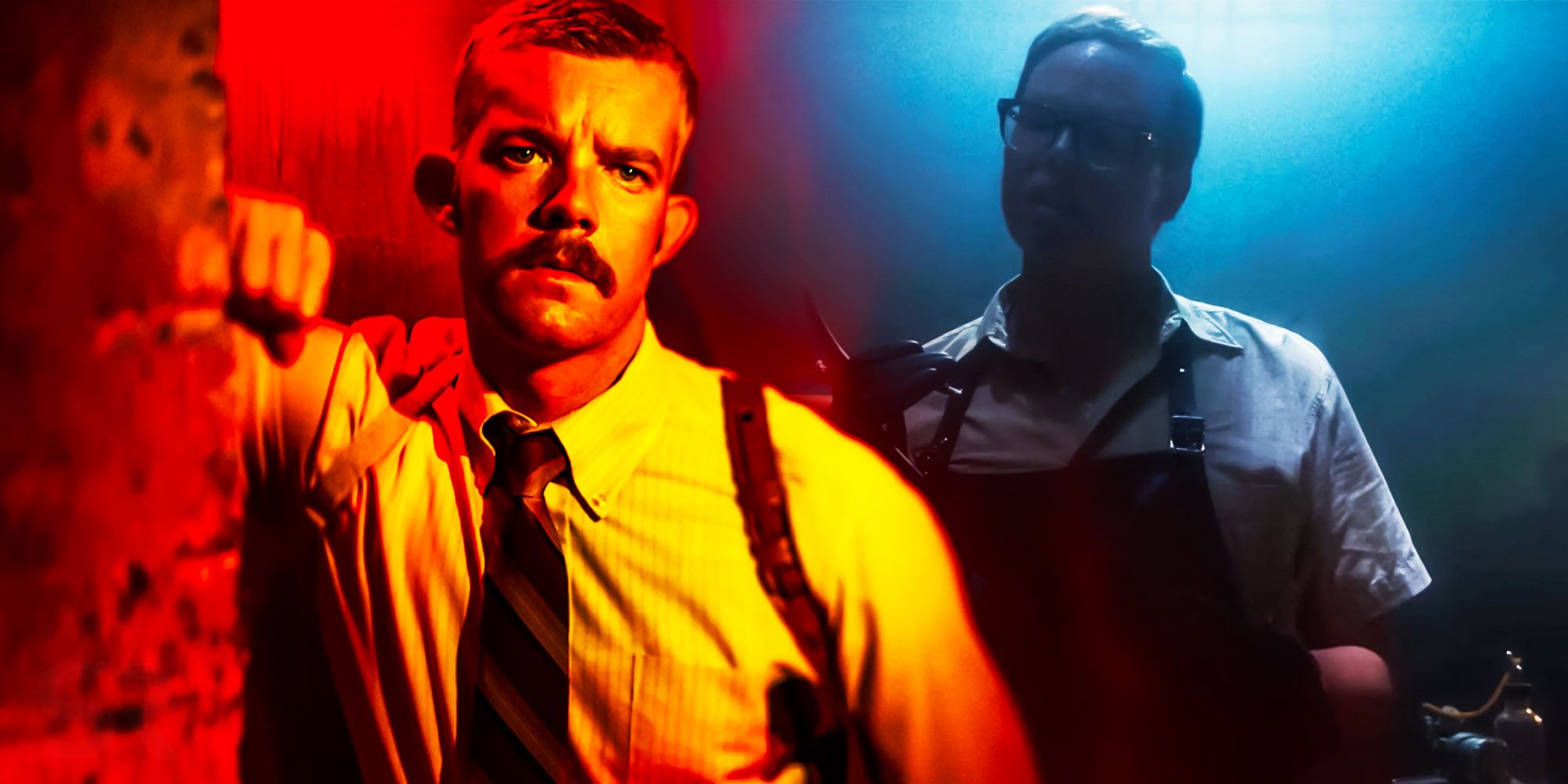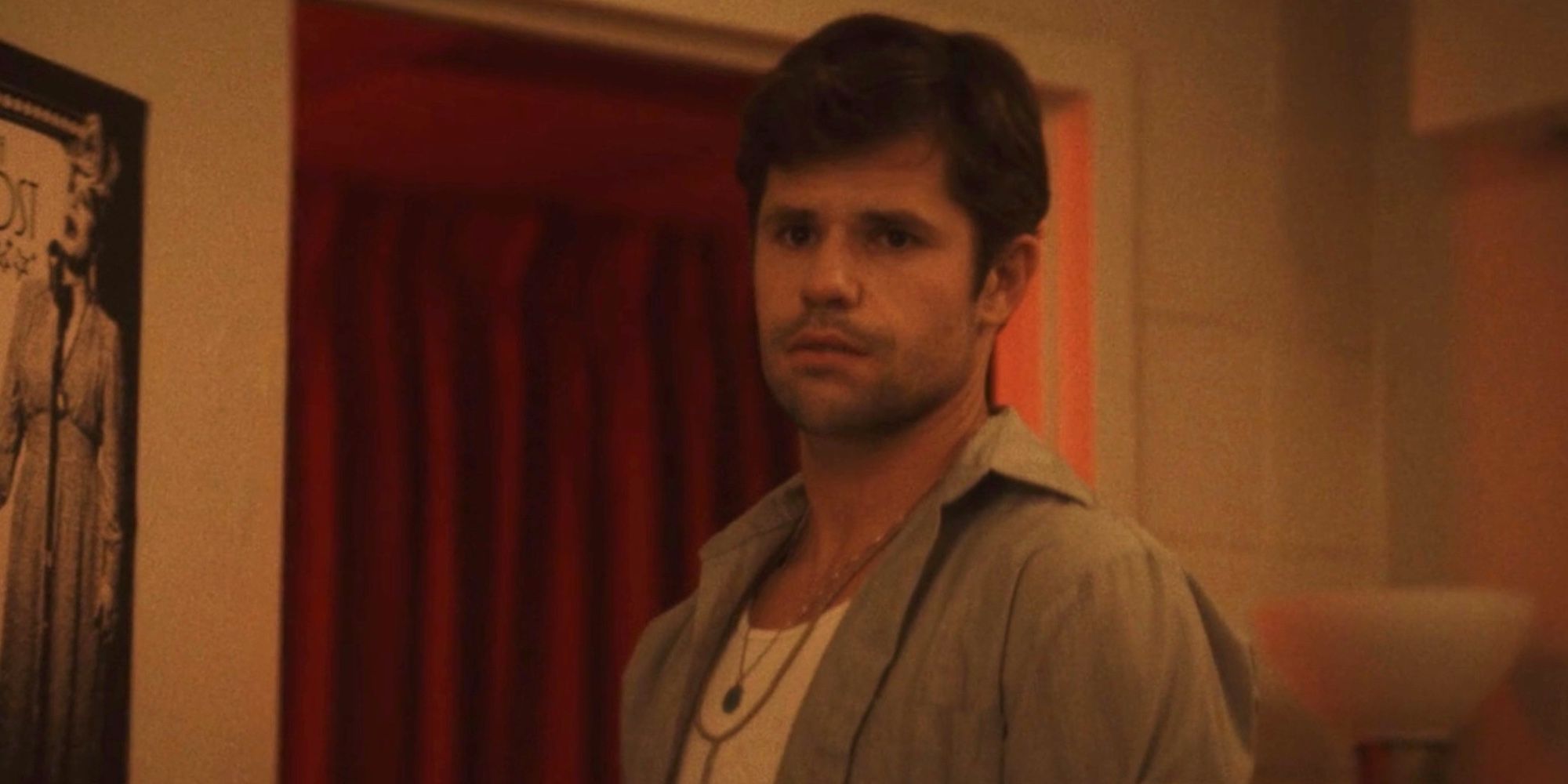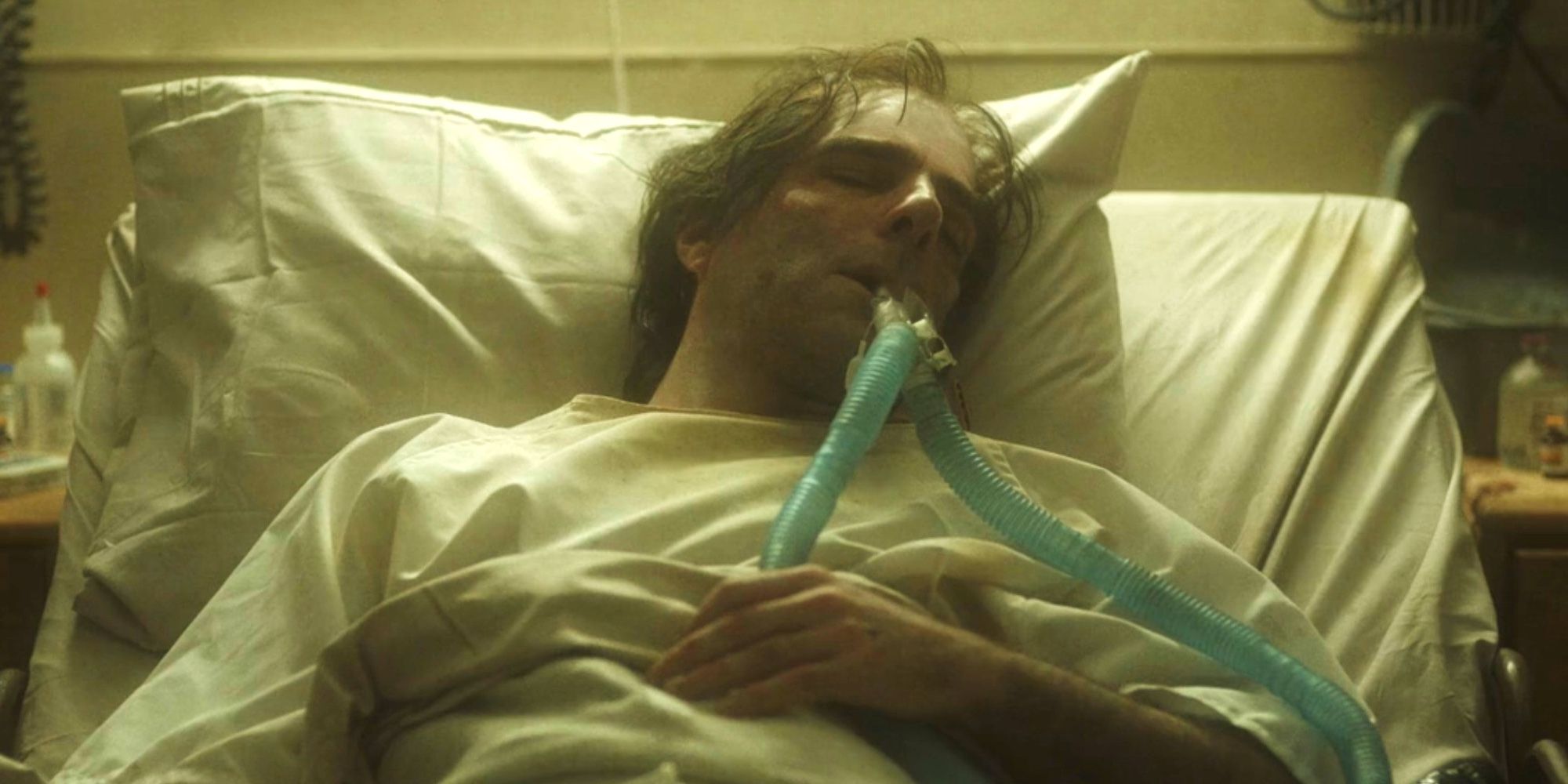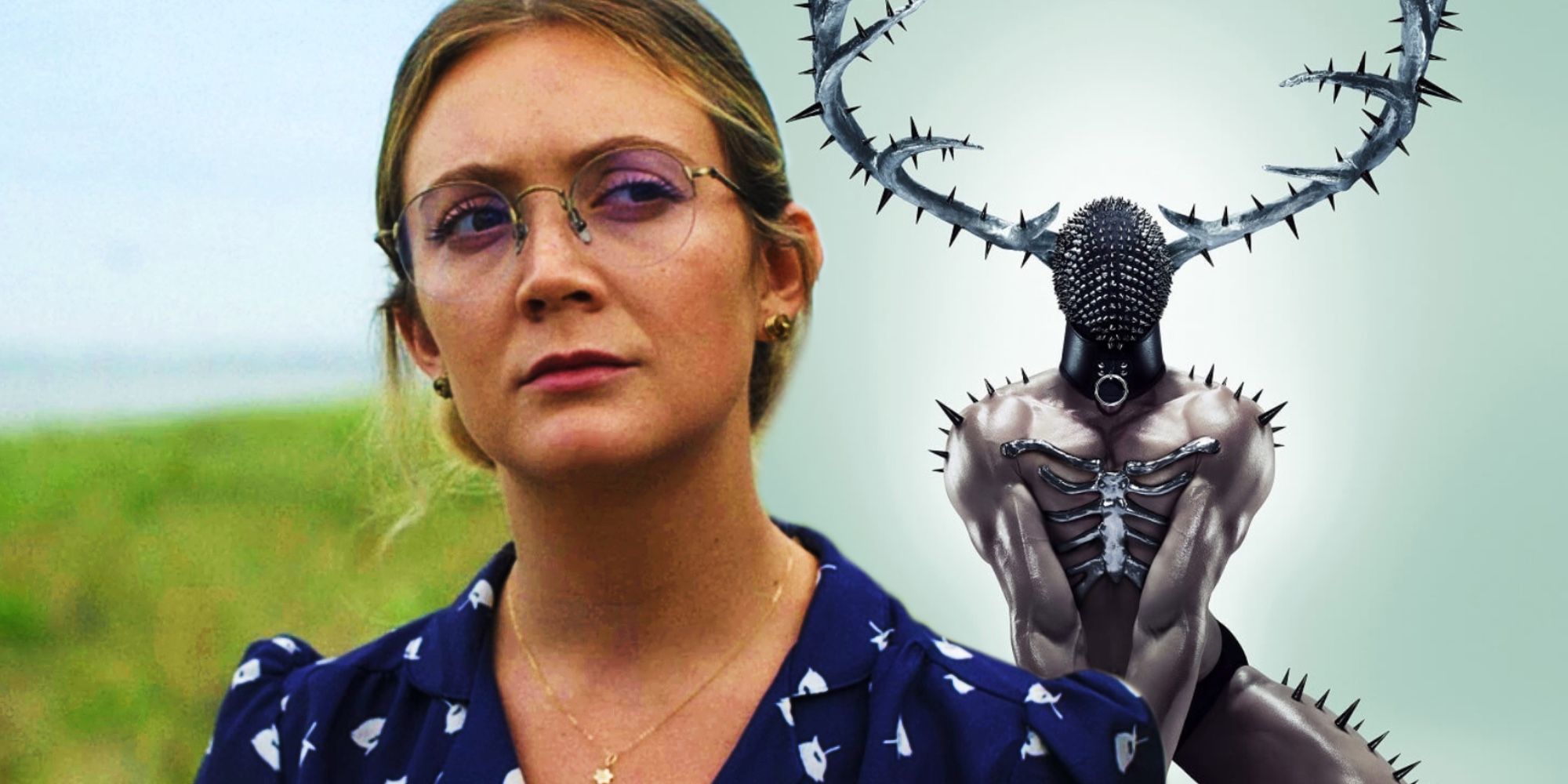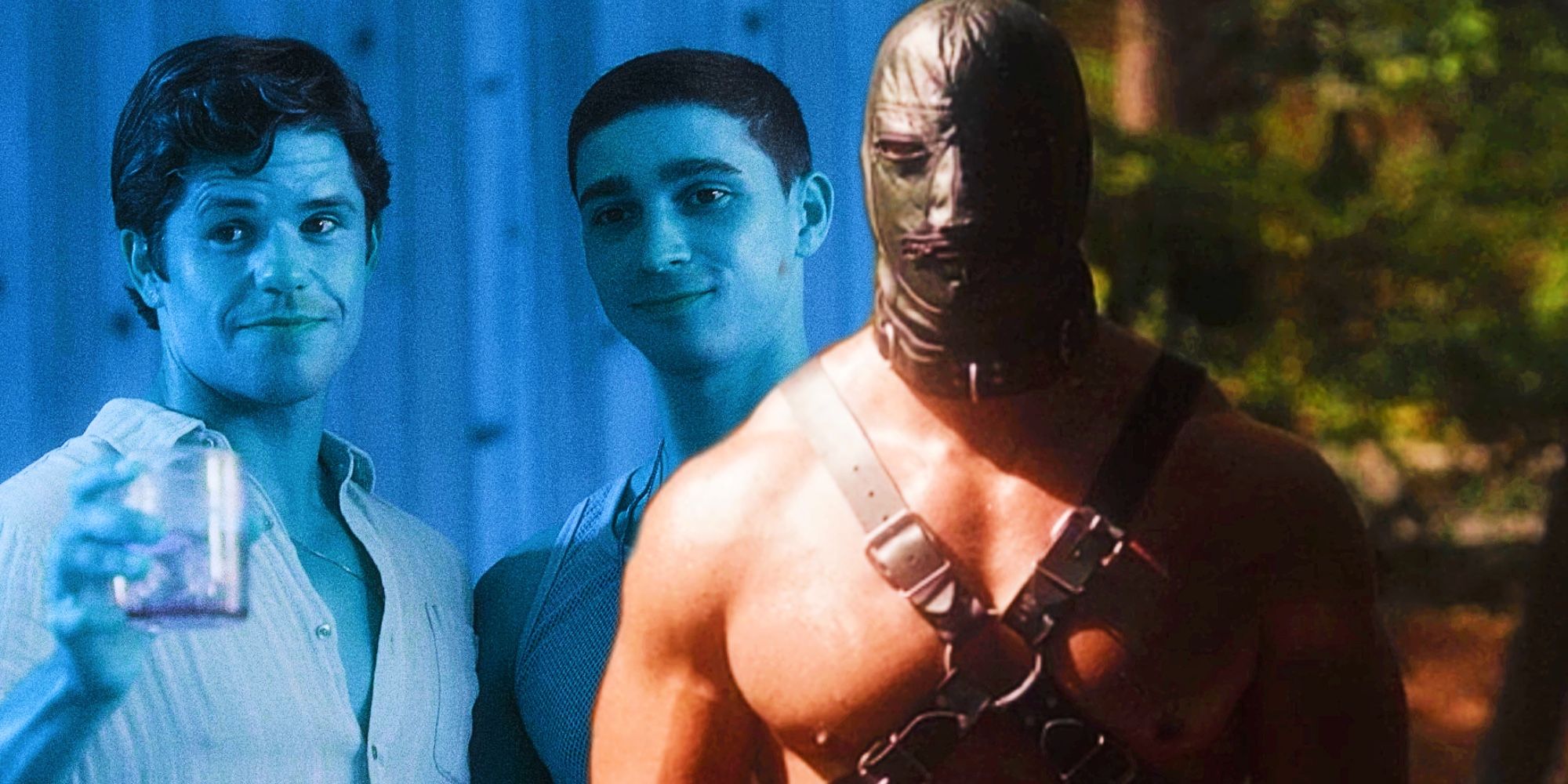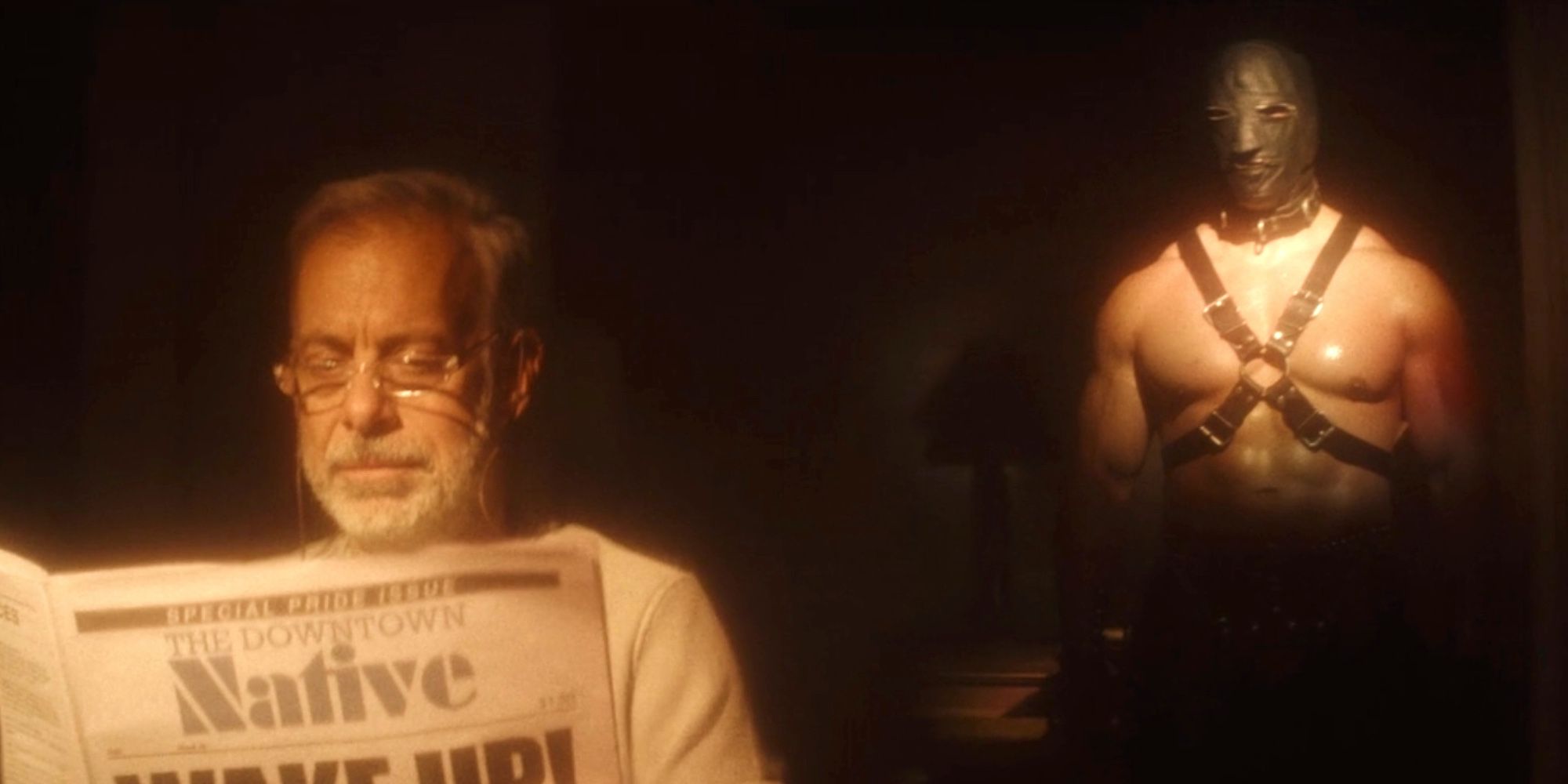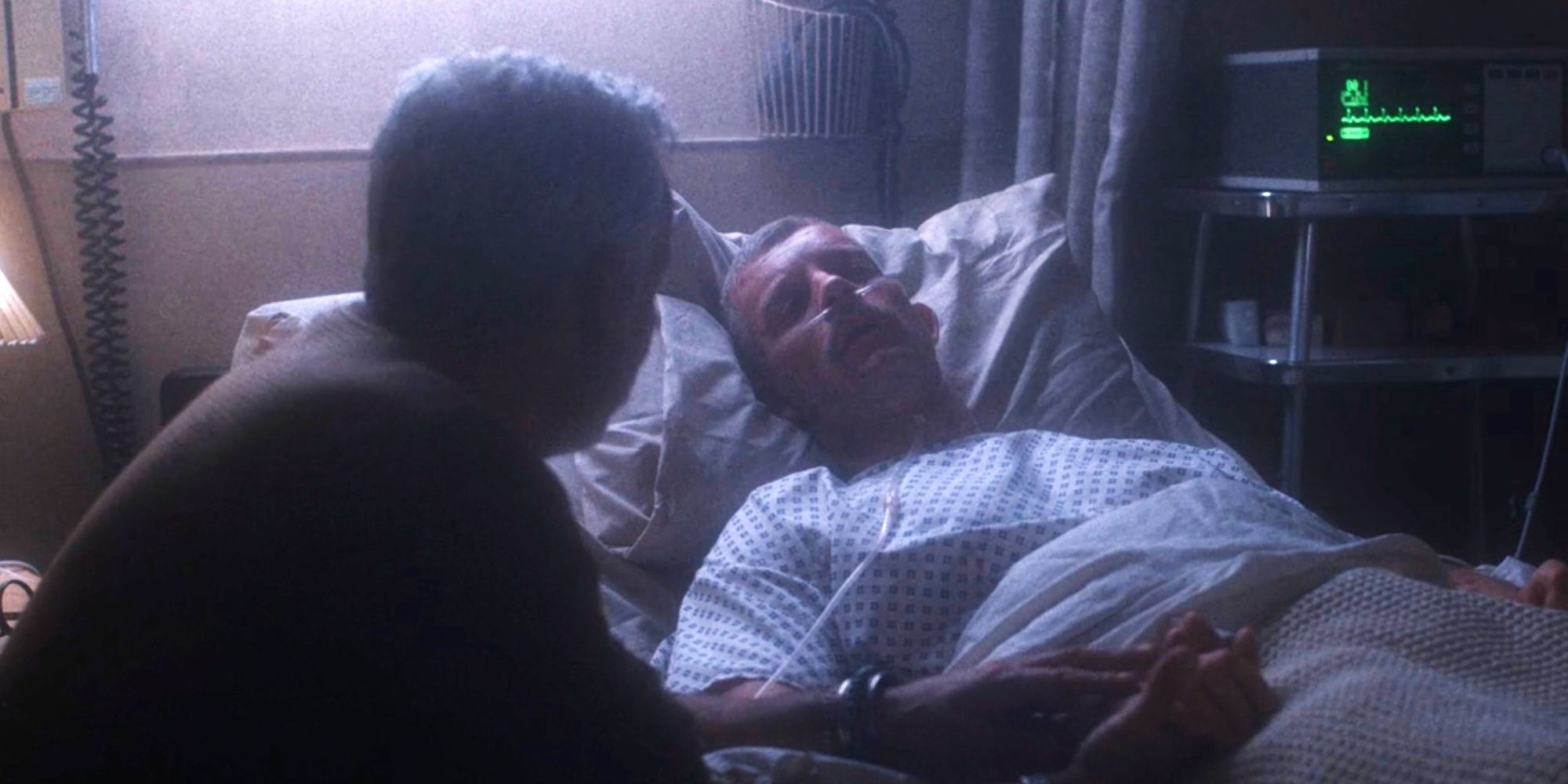WARNING! SPOILERS ahead for American Horror Story season 11!American Horror Story season 11’s emotional ending exposes what the real killer was all along, and AHS: NYC explained some upsetting conclusions for the main characters. While AHS: NYC had yet to say the name, it was clear that the mysterious disease impacting many of the gay characters was the HIV/AIDS virus. In AHS season 11’s flash-forward to 1987, the illness is finally given a name, but it’s too late to save those that have already been lost, especially since the authorities and medical community weren’t taking it seriously. AHS season 11’s real killer is different from the show’s past seasons, but its essence is also far more terrifying.
All but one of American Horror Story season 11’s main characters die in the finale, with Big Daddy taking more victims than Mr. Whitely. Each character has an emotional confrontation with either death that incites a change of heart or action, but AHS: NYC’s ending still leaves much of the story untold. However, since AHS: NYC explained its killer is based on a real-life epidemic, the ambiguous future for Adam can still be surmised through what really happened to activists in New York City’s gay community at this time. AHS: NYC’s ending is sadder than many past finales, leaving more to ponder regarding the meaning of the series’ horror premise.
What Happens In AHS: NYC’s Ending
American Horror Story season 11’s ending sees Sam, Hannah, and Patrick succumb to the real-life HIV/AIDS virus, with Gino and Adam spending the final episode searching for answers and engaging in important activism. AHS: NYC explained that when Sam dies, he’s taken through a dream-like hospital in which he sees men who he slept with succumb to the HIV/AIDS virus. Patrick’s death also happens slowly as he’s taken back in time through painful memories, with the ghost of his ex-wife Barbara showing him what the effects of his self-denial and rebuilding of his life did to himself and others. As Patrick dies, Gino sits by his bedside year by year.
Meanwhile, Adam tries to research the HIV/AIDS virus based on the information that the pregnant Dr. Hannah Wells left before her death, with her knowledge helping Adam spread awareness that the virus can be transmitted sexually. American Horror Story season 11 explained that Gino sees an increasing number of his colleagues, acquaintances, and patrons of similar areas dying from the disease, with the character trying to keep the wrath of Big Daddy at bay. After a decade of protests and watching those around him die, Gino is killed by Big Daddy in 1991. As Adam prepares to give a speech at Gino’s funeral, AHS: NYC cuts to black.
What Sam’s Death Dream Sequence Really Meant
American Horror Story: NYC’s emotional ending truly begins at Theo’s tragic funeral, which immediately leads into an extended dream sequence in which Sam sees himself and others heartbreakingly die of the HIV/AIDS virus. AHS: NYC explained that Sam is brought before men he neglected, abused, or worse, while Big Daddy, who seems to be Sam’s shame and shadow, kills or tortures them. Sam’s death dream is meant to show that he needed to see the pain and suffering he caused others in an attempt to mask his own, with his money and power meaning nothing when he’s sick, alone, and dying of a disease.
It isn’t until Sam unmasks his shame by ripping off Big Daddy’s hood and kissing him that AHS: NYC explained that he’s able to move on and accept himself, as he lets go of his own pain and keeps himself from continuing to inflict it on others. Zachary Quinto’s AHS season 11 character tried to outrun the darkness and ended up damaging the lives of those around him, and it wasn’t until the death of Theo and his own worsening condition that Sam recognized the harm he did to his own community. Henry then spreads Sam’s ashes in the ocean, allowing him to wash away his sins in the afterlife.
Were Ticks Responsible For Causing The AIDS Epidemic? What Really Happened
American Horror Story season 11 explained little and doesn’t give a clear answer as to what incited the disease’s spread. Billie Lourd’s AHS: NYC character Hannah reveals that the illness didn’t originate with Fire Island’s deer, but that deer ticks from a lab could potentially be the answer. Fran had told Hannah of a conspiracy theory that the U.S. government experimented on deer ticks in labs and released them into the wild, which was intended to create and spread the disease. However, Hannah doesn’t hold much stock in Fran’s conspiracy theory, as the medical community’s interest in ticks primarily relates to the origins and spread of Lyme disease.
The reason why AHS: NYC’s ending doesn’t give a definitive answer is that there wasn’t one when the show’s timeline ended. The origin of HIV is traced back to a virus mutated from chimpanzees, which was identified by researchers in 1999. Researchers believe the virus spread to humans as far back as the 1800s after consuming infected monkeys in Africa, which then spread to Haiti in the 1960s, then from the Caribbean to New York in the 1970s (via HISTORY). AHS: NYC’s focus on Fire Island’s deer and ticks was thus somewhat of a red herring, as the identification of Lyme disease and HIV/AIDS occurred around the same time.
AHS’s Season 11 Ending Confirms Big Daddy’s Killer Twist
American Horror Story: NYC episode 8’s ending suggested that Big Daddy was never a serial killer in the typical sense of the word, and that the leather-clad figure was never entirely real. Rather, AHS: NYC explained that Big Daddy was a visual representation of the virus, which stalked and killed various American Horror Story season 11 characters. When Big Daddy followed characters around, he was symbolizing their infection with the HIV/AIDS virus, even if they didn’t know it yet. When Big Daddy killed the characters, it was actually a physical representation of the disease killing them.
The two-part finale of American Horror Story season 11 explained that Big Daddy was simply a physical manifestation of the disease. Having been diagnosed with HIV/AIDS for years, Gino continued to be visited by the Big Daddy, with his sightings becoming more frequent as Gino’s symptoms worsened. American Horror Story: NYC’s ending also included Gino seeing Big Daddy take a machine gun and mass murder his colleagues at his newspaper, revealing how quickly the disease had taken so many people. This explains why it was impossible for AHS: NYC’s dying characters to kill Big Daddy on Fire Island, as the disease would still come back for them later on.
What Adam & Gino’s AHS: NYC Endings Mean
AHS: NYC explained two very emotionally upsetting endings for Gino and Adam. Gino lives for another decade as he watches everyone around him die from HIV/AIDS virus and tries to keep away from Big Daddy’s wrath himself, with his activism efforts feeling in vain as his community still continues to perish. As Gino tried to push death away, he was still consumed by it while hopelessly watching those around him die. After Gino’s work helped bring awareness to the disease, the tired character was brought into the light by Patrick, but he still fought back against being Big Daddy’s next victim in the American Horror Story: Double Feature follow-up.
Adam’s AHS: NYC ending is similarly sad, as he continues his own activism work while seeing every single person he loves die from this disease. AHS: NYC explained that Adam continues Hannah’s work researching HIV/AIDS and spreading awareness alongside Gino, but is left as one of the few who survives. As Adam prepares to give a speech at Gino’s funeral, American Horror Story season 11’s finale implies that Adam has already given this same speech dozens of times, and will do it again. Gino and Adam’s endings reveal that this serial killer wasn’t purposeful in who it stole away, but the survivors could still bring hope by combating this threat.
Why AHS: NYC’s Killer Is So Different From Past Seasons
While AHS: NYC does revive serial killers as main villains, the symbolic nature of the killer is different from past seasons. AHS: NYC’s killer is a very real threat that taps into a different fear than vengeful spirits, sadistic psychopaths, supernatural entities, or religious symbols. AHS: NYC explained that its killer is a disease rather than a villainous man, woman, or ghost, which is a much more familiar and tangible fear for audiences. Perhaps inspired by the fears and fatalities caused by the COVID-19 pandemic, AHS: NYC’s focus on the AIDS epidemic highlights the real horror story of the threat that terrorized New York City’s gay community in the 1980s.
AHS: NYC’s killer disease is thus more emotional than past villains, as it’s a murderer that many have direct experience with in their daily lives. Horror stories don’t always involve the supernatural or the monstrous minds of serial killers, with American Horror Story season 11’s true story shining a spotlight on these horrifying fears. Over 40 million people have died globally from HIV since the AIDS epidemic began (via WHO), which makes it far more terrifying than American Horror Story season 10’s unrealistic vampires or aliens.
How Did The AHS: NYC Ending Compare To Other Seasons?
With 10 other seasons under its belt, the anthology series American Horror Story has experienced a variety of different finales, making what AHS: NYC explained not all that out of place. Ryan Murphy introduced the very first season of his TV show, dubbed Murder House, with a similarly down ending and nearly all the main characters meeting their demise to remain trapped in the house forever. However, Murder House didn’t necessarily feature the same social commentary or depiction of real-life harrowing events that American Horror Story season 11 explained. While season 1 did showcase historical figures like Elizabeth Short, the inclusion of great history didn’t start happening until later installments.
AHS season 7, Cult, is the only other chapter to tackle real-world issues in the same overt way that NYC did, but NYC arguably did it better. The AHS: Cult finale differs from NYC, giving more of a positive-ish conclusion with Kai finally paying for his crimes. What AHS: NYC explained in its finale, however, is unique for the series. Choosing to metaphorically embody the terror and tragedy of the AIDS epidemic in a serial killer known as Big Daddy ultimately caused audiences to foster a greater emotional connection to the ending compared to other seasons, and put a whole new spin on the genius of American Horror Story.

